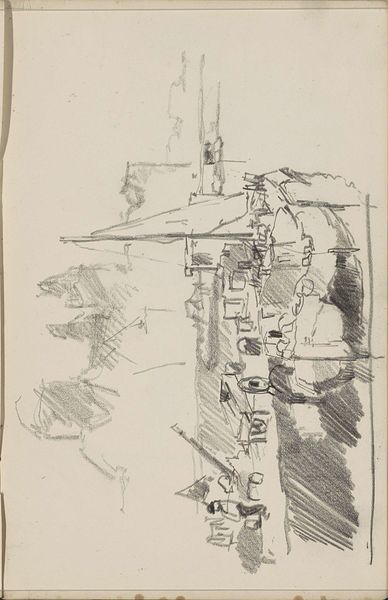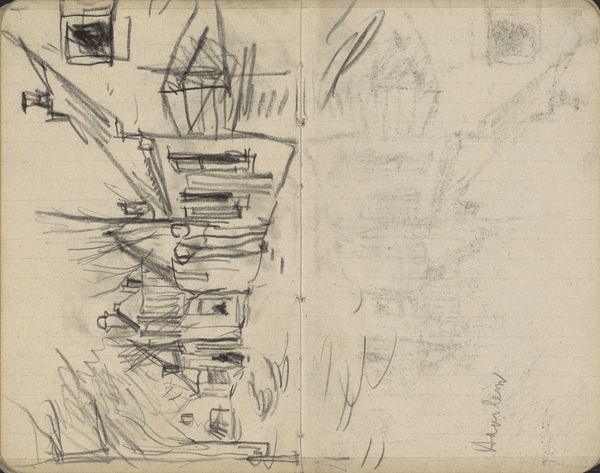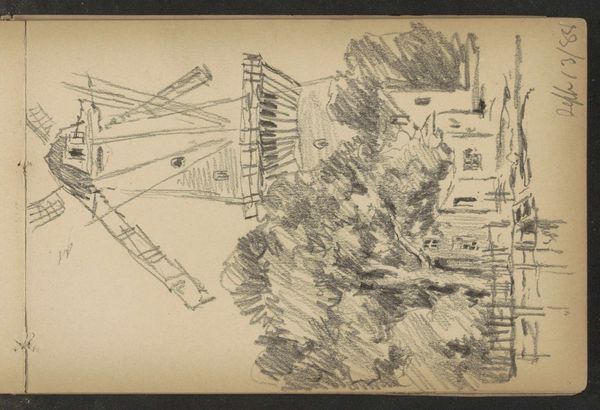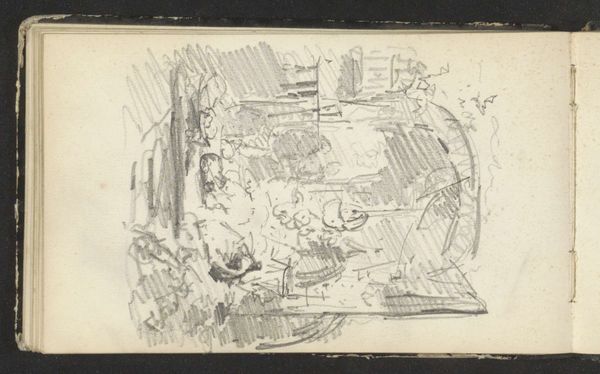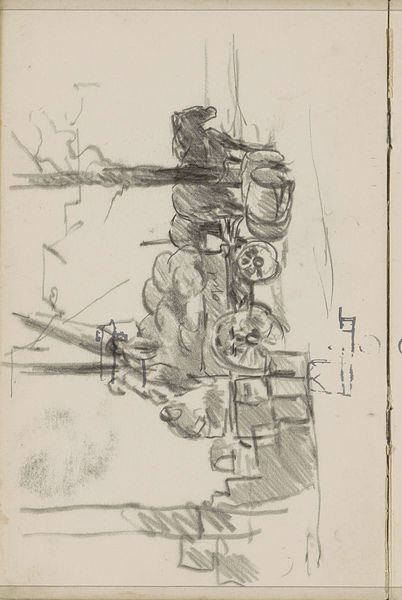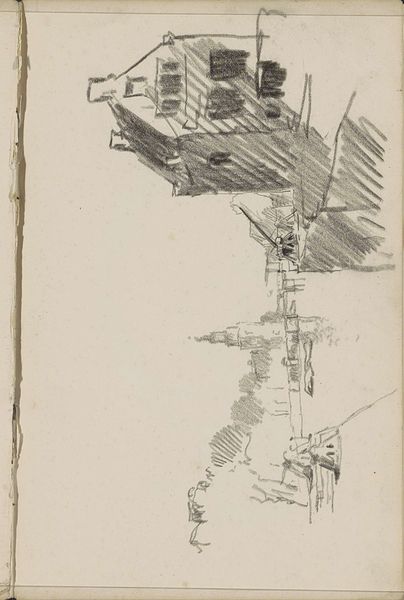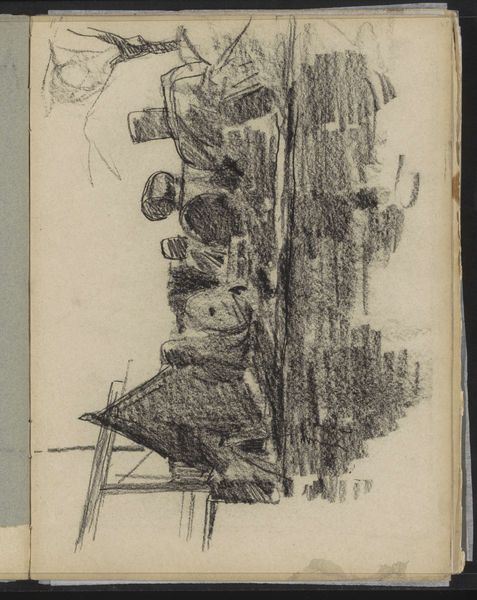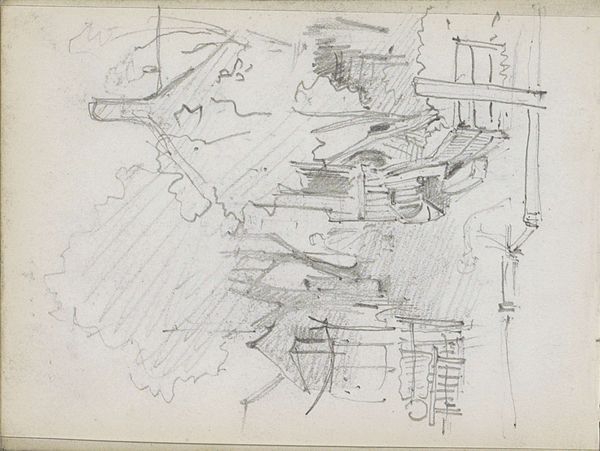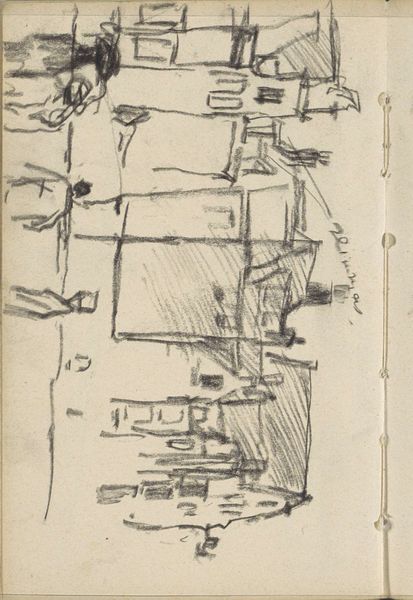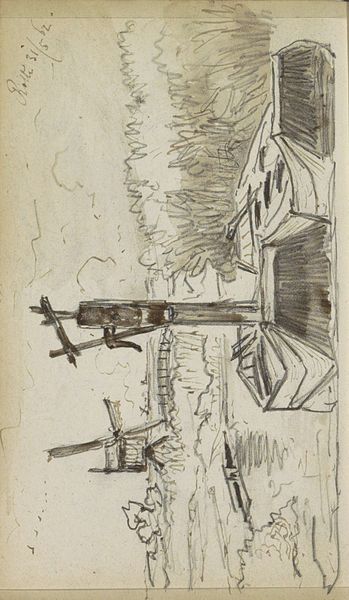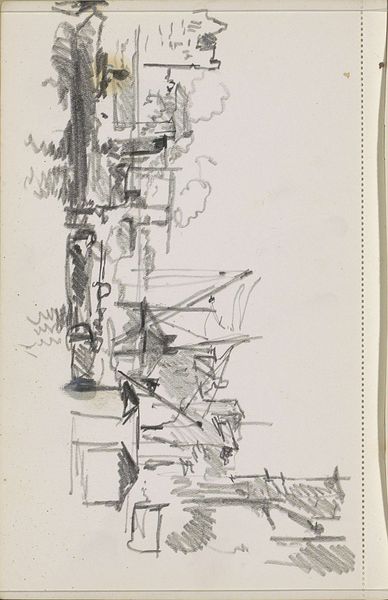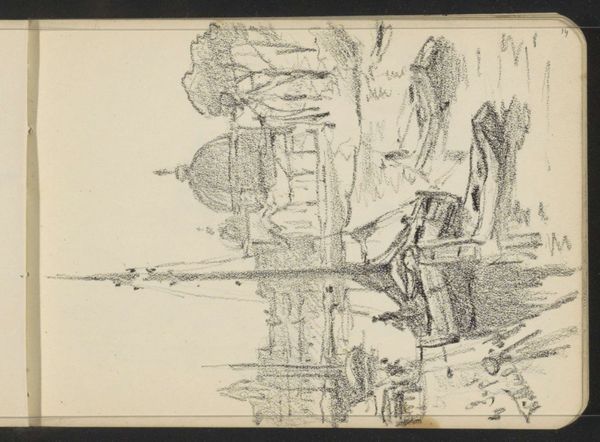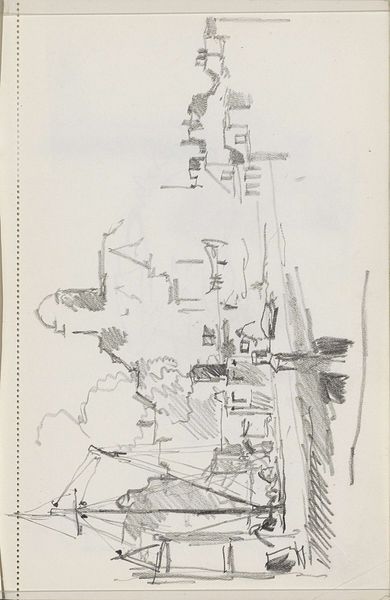
drawing, pencil
#
drawing
#
ink drawing
#
pen sketch
#
sketch book
#
landscape
#
personal sketchbook
#
sketchwork
#
ink drawing experimentation
#
geometric
#
pen-ink sketch
#
pencil
#
pen work
#
sketchbook drawing
#
sketchbook art
Copyright: Rijks Museum: Open Domain
Editor: Right, let’s talk about “Houses and Mills on a Canal,” dating from 1888-1889, an ink and pencil drawing by Alexander Shilling. It’s incredibly intricate, almost chaotic, but there’s a real energy to it. How do you interpret this work? Curator: This sketch offers a fascinating glimpse into the 19th-century Dutch landscape and its evolving representation. The presence of both houses and windmills signifies a particular moment of industrial transition and resource utilization within the Dutch socio-economic structure. What I find compelling is how Shilling uses the sketchbook itself as a space for exploration; a space less burdened by expectations of the Salon or the market. What impact do you think the lack of formal commission would have on this sketch? Editor: Interesting point. Maybe that looseness allowed him to capture something more genuine? It doesn't feel idealized, more like a raw observation. So, it's like the personal context affects the style? Curator: Precisely. Sketchbooks at the time offered an intimate and immediate connection to the artist's experience, bypassing academic or commercial constraints and perhaps unintentionally giving a more objective representation of Holland’s shift from reliance on the wind to early industrial methods. To understand Shilling’s image, we must reflect on art's public role: both its visual components and how social context and presentation shape our engagement. What aspects of this drawing would not have made it into a formal work destined for the public eye, and why? Editor: Well, maybe the unfinished look? It's a little rough around the edges. The precision of an official artwork wasn’t a factor. Curator: And within this “roughness” lies its value as an artwork intended only to be seen by its maker. Now it resides within a museum to be analysed and considered in perpetuity. Editor: I’m realizing that this seemingly simple sketch carries a complex story of social and artistic freedom within its marks! Thanks!
Comments
No comments
Be the first to comment and join the conversation on the ultimate creative platform.
